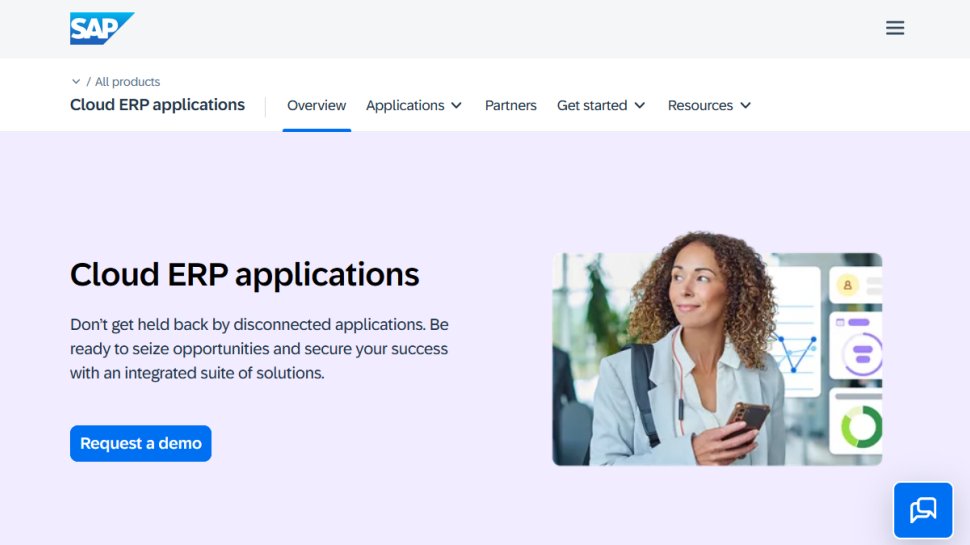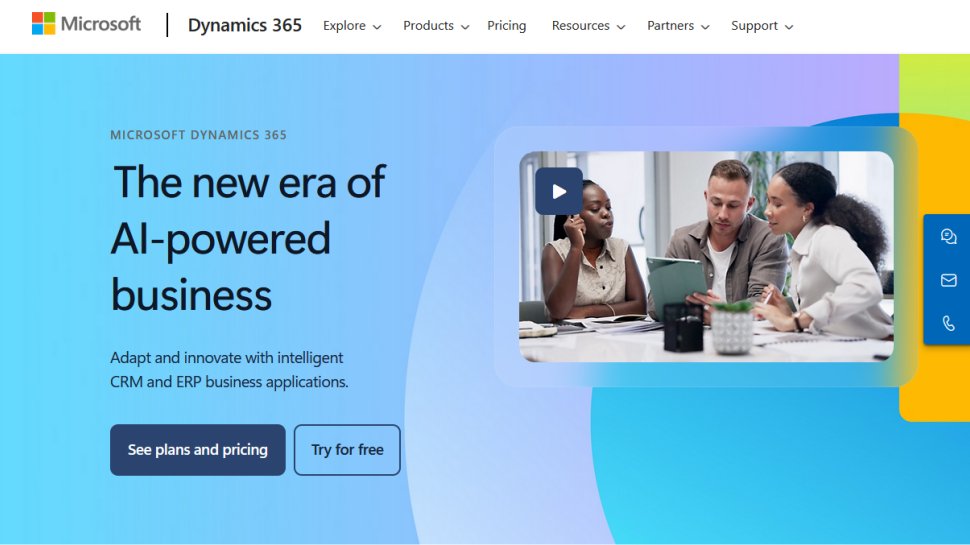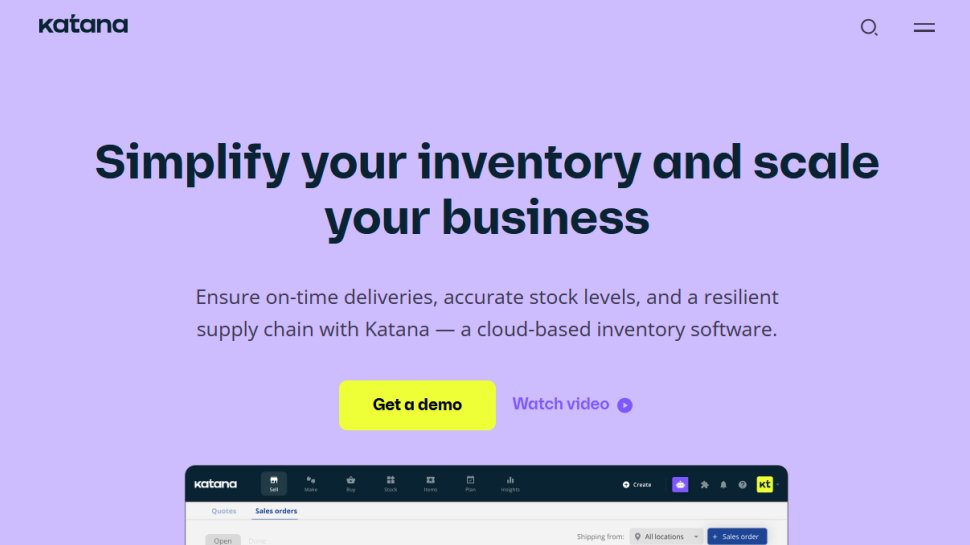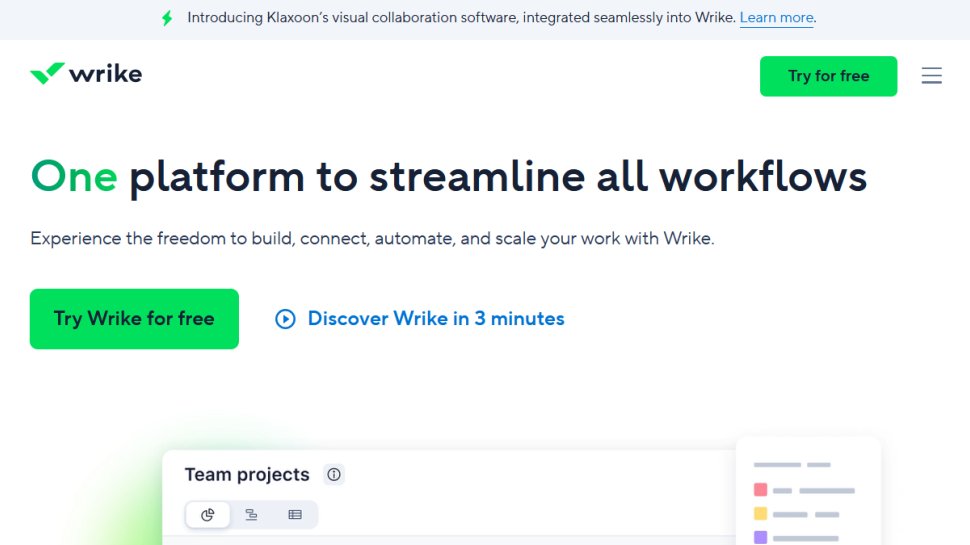Best ERP software of 2025
Enterprise Resource Planning made easy

We list the best ERP software, to make it simple and easy to better manage inventory and sales cycles from a single and reliable platform.
One rule to note is that there is a software tool for virtually every need, whether individual or enterprise needs. Enterprise Resource Planning (ERP) is one of the areas where software helps a lot.
ERP refers to managing important business processes such as payroll, invoices, purchase orders, bill payments, etc. It’s difficult to do this manually, especially for large businesses, which is where ERP software helps.
An ERP software can be cloud-based or hosted on-premise. Cloud-based systems are more convenient because you can spin them up and use them from anywhere. On-premise means hosting the software on your own servers, which some companies do for more security and control over their data.
Cloud-based ERP software makes it easy to manage your business's day-to-day operations. It’s more beneficial for small and medium-sized businesses lacking the resources to buy and maintain their own servers. You give up some control over your data by using a cloud-based tool, but we think the convenience, potential cost savings, and scalability outweigh this disadvantage.
We tested different cloud-based ERP software to identify the best ones. We identified the best ones based on important factors including pricing, customer support, ease of use, performance, etc.
We've also featured the best product information management software.
The best ERP software of 2025 in full:
Why you can trust TechRadar
Best ERP software for large companies

1. SAP ERP
Reasons to buy
Reasons to avoid
SAP is Germany’s biggest software company, and its tools are very popular within Europe and abroad. The company's ERP software is aptly named SAP ERP. It offers a lot of features that help businesses manage their operations effectively.
SAP ERP has a lot of functions spread across human resources, finance, sales, procurement, supply chain management, etc. The human resource tool enables you to store all needed data about your employees and manage them effectively from a centralized database. The finance tool enables you to monitor all your financial transactions and extract insights.
As for supply chain management, SAP ERP helps you to place and ship orders and track their deliveries. It also simplifies sending and receiving invoices for your business. This platform allows you to gather data about your customers and access it from one centralized database, i.e., customer relationship management.
Given the expansive data you feed into it, it’s fitting that SAP ERP can help you analyze that data to extract business insights.
A major drawback of SAP ERP is that it has a complex user interface that non-technical people might find difficult to navigate. Likewise, integrating it with third-party apps isn’t straightforward, so you may need to hire an experienced engineer to help you, and they don’t come cheap.
Best ERP software for Microsoft users

2. Microsoft Dynamics 365
Reasons to buy
Reasons to avoid
Virtually everyone knows Microsoft, the tech giant behind the Windows operating system. It offers numerous other software tools, including the Dynamics 365 ERP.
Dynamics 365 offers many functions cutting across sales and marketing, finance, supply chain management, and customer service.
You can gather data about customers and access it from a centralized database; this makes it easy to retrieve data when you want to build up customer relationships. The data also helps you identify your customer’s needs to fulfill them.
You can manage your supply chain on Dynamics 365. The platform makes it easy to place orders and track them up until delivery. You can keep track of your inventory to know what you need to restock or not.
Regarding finance, Dynamics 365 enables you to manage your accounting and invoicing and extract insights from your business metrics.
This platform has so many features that it’s known for having a steep learning curve. It’s also pretty expensive, starting at $50 per user per month.
Best ERP software for manufacturing

3. Katana MRP
Reasons to buy
Reasons to avoid
Katana is an ERP tool designed for businesses that manufacture their products. It enables you to manage your supply chain starting from the raw materials up to the finished product.
Katana offers real-time inventory management to help you stay on top of your supply chain. You'll always know what amount of raw materials you possess and which ones you need to reorder. It also offers real-time master planning to help you manage your production and scheduling.
Katana integrates with QuickBooks and Xero, two popular accounting tools, so you can use them to stay on top of your finances.
Katana has a simple pricing structure. You can choose from one of three plans, with the Essential Plan as best for small businesses. You can use the 14-day free trial to test Katana’s features before making your final purchase decision.
Best ERP software for finance

4. AccountMate
Reasons to buy
Reasons to avoid
AccountMate is focused on the financial and accounting management parts of enterprise resource planning. It helps businesses manage their finances accurately.
You can use AccountMate's accounts payable feature to monitor every payment you need to make and avoid any late payments or duplicate invoices. You can use the accounts receivable (A/R) module to monitor your sales and ensure you receive payments when due.
You can also use the general ledger (GL) module, which lets you do many things, including generating financial reports from your sales data to present to domestic or foreign tax authorities. There's also the contact manager module that enables you to connect to Microsoft Office products and manage customer relationships.
AccountMate is known for having a cluttered user interface that you may find difficult to navigate. It also doesn’t offer much outside financial management in the ERP cycle. However, it’s good at what it specializes in.
Best ERP software for scalability

5. Wrike
Reasons to buy
Reasons to avoid
Wrike is a broad business management software with many features. It offers a cloud-based resource management platform that makes it easier to run your business.
Wrike offers many collaborative features, so it's easy to keep your staff on the same page. You can assign tasks to each of them and set deadlines, and everyone can see their respective tasks and the required contribution from others to meet business goals.
With Wrike, you can visualize all your business projects in a way that's easy to understand. You can extract insights from your business and financial data to identify what needs improvements or not.
Wrike offers integrations with over 400 software tools ranging from Salesforce for customer relationship management to Zoom for video conferencing, OneDrive for cloud storage, Jira for task tracking, etc. This platform is very customizable, thanks to these integrations that add extra functionality.
Wrike is a very broad platform with a steep learning curve. It may feel overwhelming at first because of the numerous features, but you can get used to it with time.
We've also featured the best GPS fleet tracking solutions.
Best ERP software FAQs
What are the essential features of ERP Software?
1. Accounting
The platform should enable you to automate accounting-related tasks such as payroll, invoicing, and financial reporting. Automation reduces the time your staff spends on accounting processes and frees up time for other areas. Automation also brings about lesser errors compared to humans when working with figures.
2. Data Analytics
An ERP software collects data from different business divisions and sources. Hence, you should be able to analyze that information using the software. What is our revenue growth (or fall) over a specific period? How many customers did we add? By what percentage have payroll costs increased? Etc.
3. Customer Relationship Management (CRM)
An ERP should have features that help you manage relationships with customers. For instance, you should be able to store customer information such as contact details and order history and retrieve the information whenever you want. Your ERP should also integrate with your dedicated CRM tools such as Salesforce and Pipedrive.
4. Human Resource (HR) Management
The platform should allow you to manage human resource-related functions such as managing recruitment, hiring, and onboarding. It should be able to automate some complex HR-related functions such as tax withholding and deductions.
How to choose ERP software
1. Budget
Budget is the first criterion to consider when choosing any software. How much can you afford to spend on ERP software? The good thing is that you can find a sufficient tool for any price range, though features may differ.
Most businesses use the same ERP system for years or even decades, so consider if you can afford your desired platform in the long term.
2. Third-Party Integration
Every ERP software must have integrations with other business software tools. Your ERP tool can’t do all the work; you’ll need to import data from other platforms, e.g., importing financial records from your accounting software. Ensure that your desired ERP software has sufficient third-party integration that’ll help you manage business processes.
3. Customer Support
Things can go wrong at any time, and you’ll likely need external support to help solve your problem. Ensure your ERP software offers good support resources such as extensive documentation, how-tos, FAQs, video tutorials, etc. You should also be able to contact a human support representative if need be.
4. Scalability
The platform should work well even as your business grows alongside its data needs. The good thing is that cloud-based platforms are built to scale efficiently.
How we tested the best ERP software
We test by evaluating numerous factors. To start with, we look at the feature set, the range of tools available, and what size of businesses this would be ideal for. We consider how easy the setup is, the simplicity of the interface, and whether there's sufficient documentation and tutorials for users to utilize necessary options optimally.
We assess how well the service integrates with other relevant apps, and check the overall scalability of the service. We also analyze whether there are collaboration features for multiple users, and lastly, we judge the quality of the customer service and the different pricing plans available.
Read more on how we test, rate, and review products on TechRadar.
Get in touch
- Want to find out about commercial or marketing opportunities? Click here
- Out of date info, errors, complaints or broken links? Give us a nudge
- Got a suggestion for a product or service provider? Message us directly
- You've reached the end of the page. Jump back up to the top ^
Sign up to the TechRadar Pro newsletter to get all the top news, opinion, features and guidance your business needs to succeed!
Nicholas Fearn is a freelance technology journalist and copywriter from the Welsh valleys. His work has appeared in publications such as the FT, the Independent, the Daily Telegraph, The Next Web, T3, Android Central, Computer Weekly, and many others. He also happens to be a diehard Mariah Carey fan!